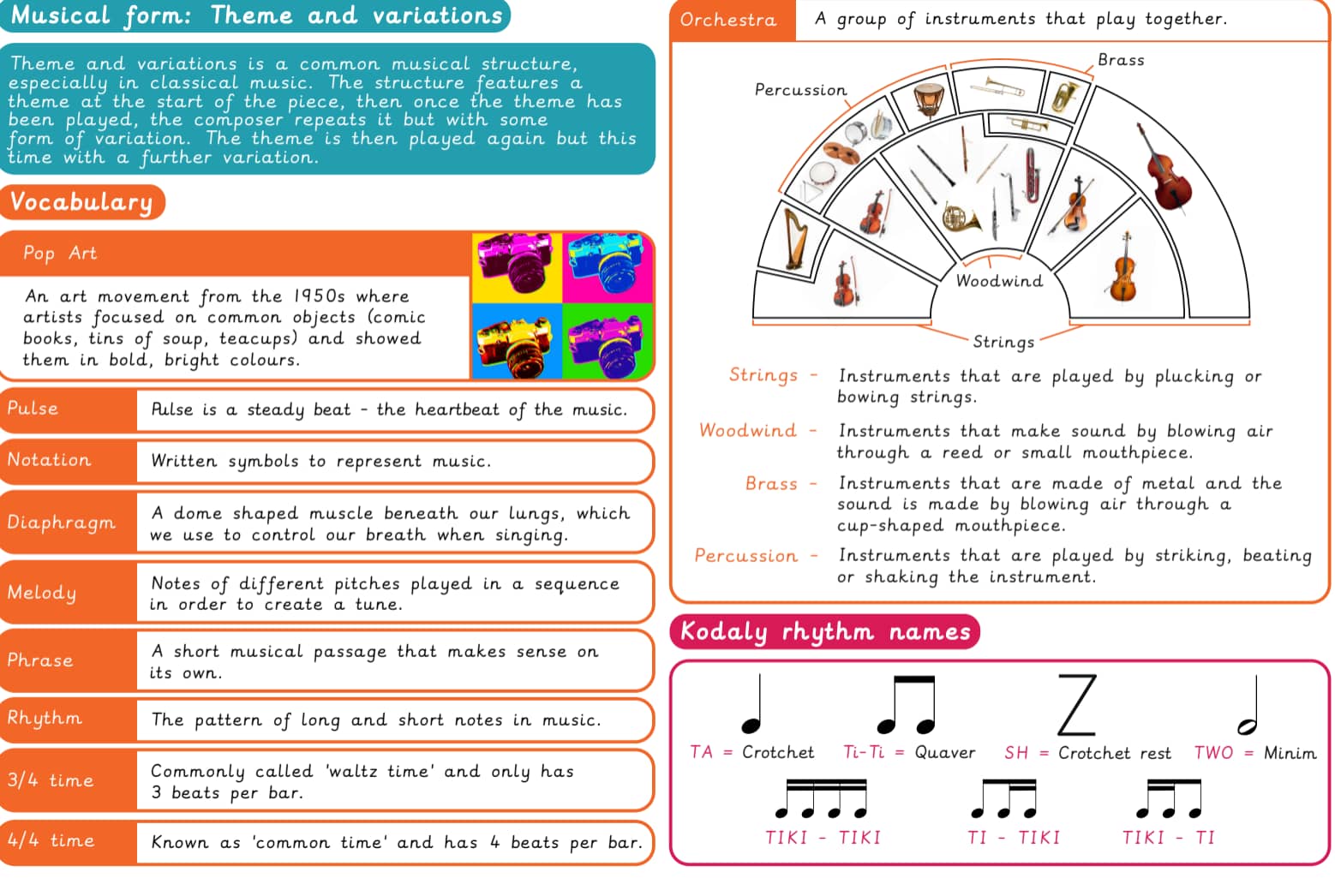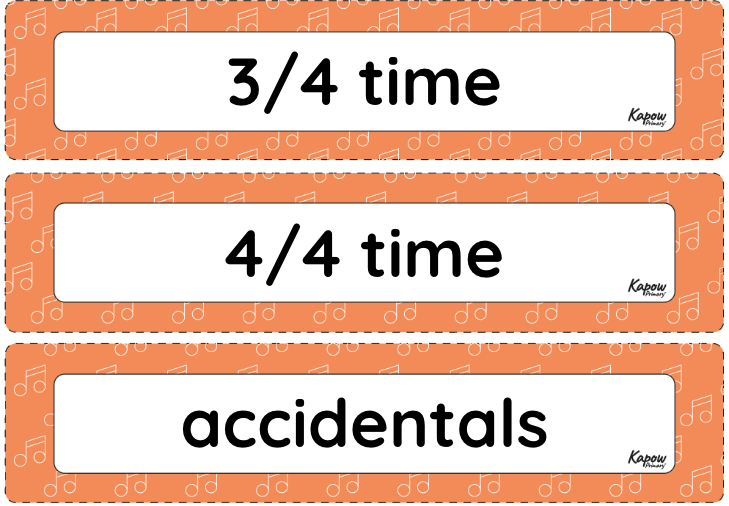Theme and variations (Theme: Pop Art)
This unit hub can be used to inform your medium term plan and to navigate to related resources.
The Curriculum and Assessment Review final report has been released. We’re reviewing the recommendations and planning for future updates. Learn more
- Subjects >
- Music >
- Key stage 2 >
- Year 6 >
-
Theme and variations (Theme: Pop Art)
Unit outcomes
Pupils who are secure will be able to:
- Performing rhythms confidently either on their own or in a group.
- Identify the sounds of different instruments and discuss what they sound like.
- Make reasonable suggestions for which instruments can be matched to which art pieces.
- Recall the names of several instruments according to their orchestra sections.
- Keep the pulse using body percussion.
- Sing with control and confidence.
- Name rhythms correctly.
- Copy rhythms accurately with a good sense of pulse.
- Draw rhythms accurately.
- Show a difference between musical variations.
- Show creativity in a finished musical product.
Suggested prior learning
Film music
Get startedLessons
Lesson 1: Pop Art and music
- To explore the musical concept of theme and variations.
Lesson 2: The Young Person’s Guide to the Orchestra
- To compare and contrast different variations in the piece The Young Person’s Guide to the Orchestra.
Lesson 3: Learning the theme
- To use complex rhythms to be able to perform a theme.
Lesson 4: Exploring rhythms
- To play TIKI-TIKI, TI-TIKI and TIKI-TI rhythms in 3/4 time.
Lesson 5: Picturing Pop Art
- To use music notation to create visual representations of TIKI-TIKI, TI-TIKI and TIKI-TI rhythms.
Key skills
Key knowledge
Related content
Resources
Unit resources

Music
Knowledge organiser: Music – Y6: Theme and variations (Theme: Pop Art)
Aimed at pupils, a single page which gives key facts and definitions from the unit "Theme and variations (Theme: Pop…

Music
Vocabulary display: Theme and variations (Theme: Pop Art)
A display version of the vocabulary from the unit Theme and variations.
Cross-curricular opportunities
Nothing relevant in this unit.

